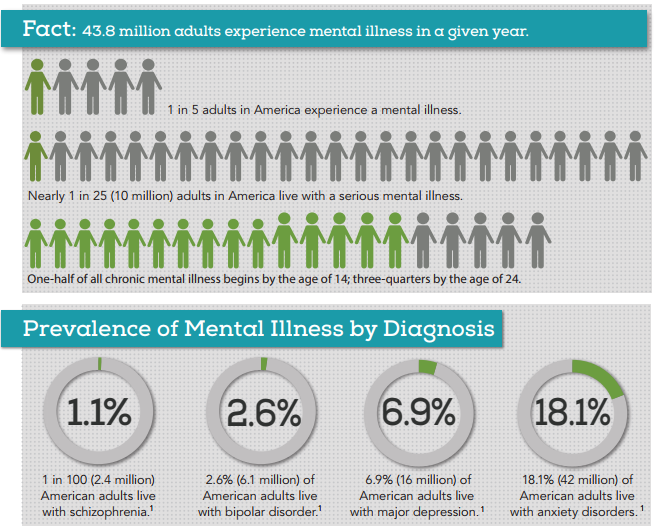Depression Statistics and Prevailance Data for Children and Adults
TweetMental health problems are a growing public health concern.
Understanding the scope of mental illnesses and their treatment is central to all Health Care Government agencies. Much of what we understand in this area comes from research in the field of epidemiology, the scientific study of patterns of health and illness within a population. Research on mental health epidemiology shows that mental disorders are common throughout the United States, affecting tens of millions of people each year, and that, overall, only about half of those affected receive treatment.
- Mixed anxiety & depression is the most common mental disorder across world with 7.8% of people meeting criteria for diagnosis.
4-10% of people in US will experience depression in their lifetime.
Common mental health problems such as depression and anxiety are distributed according to a gradient of economic disadvantage across society. The poorer and more disadvantaged are disproprotionately affected by common mental health problems and their adverse consequences.
Mixed anxiety and depression has been estimated to cause one fifth of days lost from work.
One adult in six had a common mental disorder. - An estimated 26% of homeless adults staying in shelters live with serious mental illness and an estimated 46% live with severe mental illness and/or substance use disorders.
Approximately 20% of state prisoners and 21% of local jail prisoners have “a recent history” of a mental health condition.
70% of youth in juvenile justice systems have at least one mental health condition and at least 20% live with a serious mental illness.
Only 41% of adults in the U.S. with a mental health condition received mental health services in the past year. Among adults with a serious mental illness, 62.9% received mental health services in the past year.
Just over half (50.6%) of children aged 8-15 received mental health services in the previous year.
African Americans and Hispanic Americans each use mental health services at about one-half the rate of Caucasian Americans and Asian Americans at about one-third the rate.
Half of all chronic mental illness begins by age 14; three-quarters by age 24. Despite effective treatment, there are long delays—sometimes decades—between the first appearance of symptoms and when people get help.



Sometimes crying or laughing
are the only options left,
and laughing feels better right now.

Current Issue
 Self Help Leaflets Take the help of our self help leaflets or booklets. |
 The DG Magazine All about living with depression |












